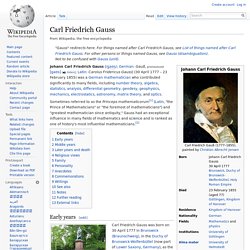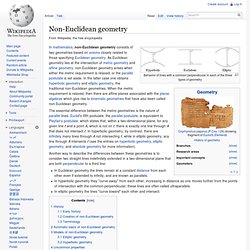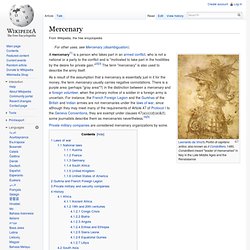

TŁUMACZENIA ESTOŃSKO - ANGIELSKIE - rahamees, plutokraat. Eight per thousand. History[edit] The relations between the Italian State and the religious confessions in its territory can be traced back to the Statuto Albertino of 1848, which applied first to the Kingdom of Sardinia and then to the Kingdom of Italy.

Its first article declared the "Roman Catholic Apostolic religion" the only state religion and granted legal toleration to all other religious confessions then present.[2] Under the Lateran treaties of 1929, which were incorporated in the 1948 Constitution of the Italian Republic, the State paid a small monthly salary, called the congrua, to Catholic clergymen as compensation for the nationalization of Church properties at the time of the unification of Italy. This ended on 31 December 1986, with the entry into force, as a result of a 1984 agreement between the government and the Holy See of the "eight per thousand" system. Current situation[edit] In 2013 there are 12 possibly beneficiaries of the tax: Carl Friedrich Gauss. Johann Carl Friedrich Gauss (/ɡaʊs/; German: Gauß, pronounced [ɡaʊs]; Latin: Carolus Fridericus Gauss) (30 April 1777 – 23 February 1855) was a German mathematician who contributed significantly to many fields, including number theory, algebra, statistics, analysis, differential geometry, geodesy, geophysics, mechanics, electrostatics, astronomy, matrix theory, and optics.

Sometimes referred to as the Princeps mathematicorum[1] (Latin, "the Prince of Mathematicians" or "the foremost of mathematicians") and "greatest mathematician since antiquity," Gauss had an exceptional influence in many fields of mathematics and science and is ranked as one of history's most influential mathematicians.[2] Early years[edit] Gauss was a child prodigy. There are many anecdotes about his precocity while a toddler, and he made his first ground-breaking mathematical discoveries while still a teenager.
The year 1796 was most productive for both Gauss and number theory. Non-Euclidean geometry. Behavior of lines with a common perpendicular in each of the three types of geometry In mathematics, non-Euclidean geometry consists of two geometries based on axioms closely related to those specifying Euclidean geometry.

As Euclidean geometry lies at the intersection of metric geometry and affine geometry, non-Euclidean geometry arises when either the metric requirement is relaxed, or the parallel postulate is set aside. In the latter case one obtains hyperbolic geometry and elliptic geometry, the traditional non-Euclidean geometries. When the metric requirement is relaxed, then there are affine planes associated with the planar algebras which give rise to kinematic geometries that have also been called non-Euclidean geometry. Another way to describe the differences between these geometries is to consider two straight lines indefinitely extended in a two-dimensional plane that are both perpendicular to a third line: Keskkonnaabi.
Posted on 03/06/2008 by erikpuura Missugune oleks maailmakaart, kui igas riigis oleks elanike tihedus samasugune?

Riigi suurus kaardil väljendab selle elanike arvu. Selline kohati väljavenitatud ja kohati kokkupigistatud kaart on täiesti olemas, parajalt naljakas, aga ka mõtlemapanev. Venemaa näiteks on soolikakujuliseks pigistatud, Hiina ja India seevastu laiutavad. Kaardi suurendamiseks klikkige sellele. Mis veel hakkab eriti silma? Kaardi allikas: Cartography: A popular perspective, Nature 439(800) List of child prodigies.
This is a list of notable people who, typically before 15 years old, showed abilities comparable to those of highly skilled adults in specific fields; hence the term child prodigy.

Mathematics and science[edit] Mathematics[edit] Born 1600–1699[edit] Juan Caramuel y Lobkowitz (1606–1682) was a Spanish scholastic philosopher, ecclesiastic, mathematician, and writer. He was a precocious child, early delving into serious problems in mathematics and even publishing astronomical tables in his tenth year.Blaise Pascal (1623–1662) was a French mathematician, physicist, and religious philosopher who wrote a treatise on vibrating bodies at nine years old; his first proof, on a wall with a piece of coal, at 11 years old, and a theorem by 16 years old. Born 1700–1799[edit] Born 1800–1899[edit] Born 1900–1999[edit] Ted Kaczynski (born May 22, 1942), the "Unabomber", was a child prodigy who excelled academically from an early age.
Born 2000–2013[edit] Mercenary. Leonardo da Vinci's Profilo di capitano antico, also known as il Condottiero, 1480.

Condottiero meant "leader of mercenaries" in Italy in the Late Middle Ages and the Renaissance A mercenary[1] is a person who takes part in an armed conflict, who is not a national or a party to the conflict and is "motivated to take part in the hostilities by the desire for private gain. "[2][3] The term "mercenary" is also used to describe the army itself.